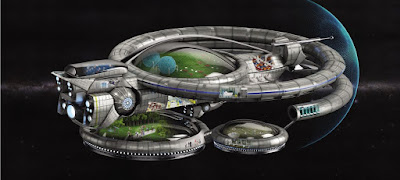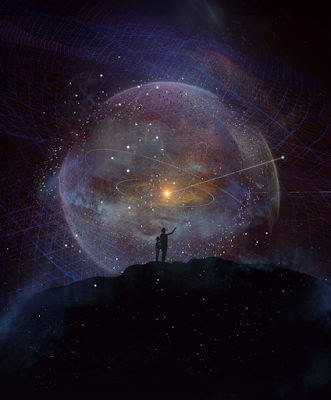 |
| Image Source: What a generational spaceship would actually look like, Rachel Feltman, Popular Science |
Topics: Evolution, Interstellar Travel, Science Fiction, Spaceflight
Mrs. Flynt played "telephone" with us, simply lining up the entire fifth grade class in one line, arranged with chairs to accent the exercise. She showed a note to the student at the beginning of the line. She then whispered the contents of the note to the student to her right. I heard it from my neighbor, and whispered it in kind. It followed down line until it got to the last: the note's contents had completely changed from the first student to the twentieth.
I do not recall the original contents of the note, but the exercise has been repeated here on Earth without the need for fusion reactors, rotating habitats to induce artificial gravity, space lasers or Klingons. Culture on a generation starship would change from its origin planet. A society would emerge diametrically different than its original, hopefully far better than our current one, inculcating survival principles that would allow it to finish the journey to its destination, and thrive once there.
In science fiction, there’s something called a generation ship: a spacecraft that ferries humankind on a multiple-generation-long journey to brand new star systems or even galaxies.
The idea has also been touted here in the real world by those hell-bent on traversing the stars. But there’s a major problem with the concept, and we’re not talking about the countless generations doomed to be born and die for the sake of a mission they never agreed to — that’s a whole other thing. Rather, Universe Today points out that, if past is prelude, the language spoken on the ship would eventually evolve to the point that it seems incoherent back on Earth.
On an Interstellar Flight, Language Itself Would Evolve, Dan Robitzski, Futurism
